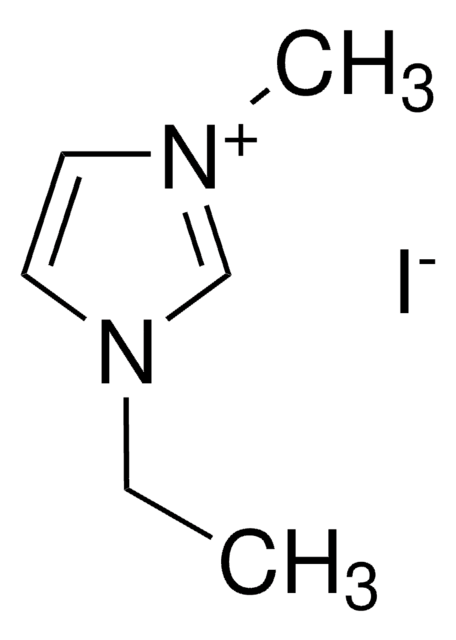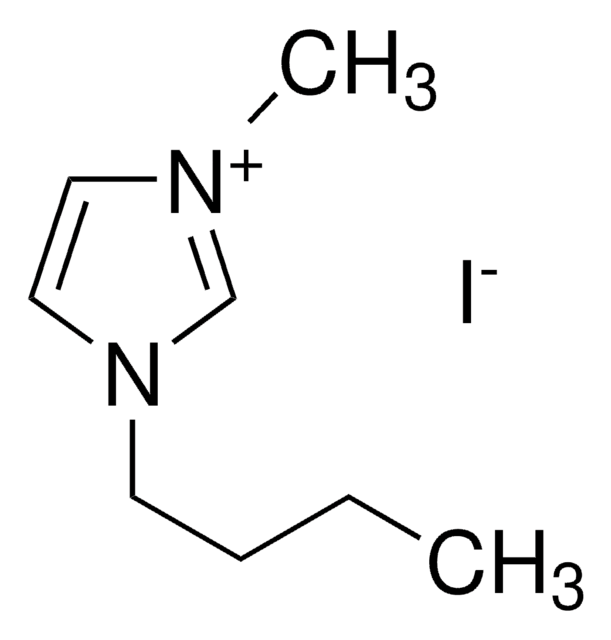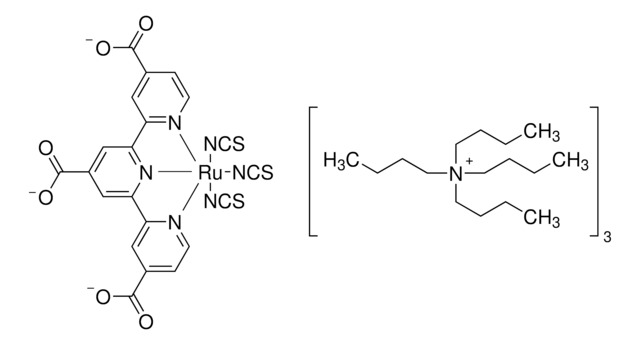791555
Titania paste, active opaque
Sinónimos:
Greatcell Solar® 18NR-AO Titania Paste, TiO2 paste
About This Item
Productos recomendados
descripción
Crystal Structure: > 99% anatase (analysis carried out on starting material, prior to paste manufacture)
Nivel de calidad
Formulario
paste (cream)
concentración
27.0 wt. %
tam. prom. pieza
20 nm (active)
≤450 nm (scatter)
viscosidad
40000-55000 mPa.s(20 °C) (Analysis carried out with 20mm 4 degree cone/plate; 40 s-1))
InChI
1S/2O.Ti
Clave InChI
GWEVSGVZZGPLCZ-UHFFFAOYSA-N
Descripción general
Aplicación
The dispersed scattering particles in Active Opaque Titania Paste formulation lead to enhanced DSC performance through the large surface/volume ratio of the sintered film.
Active Opaque Titania Paste has a blend of active anatase particles (~20nm) and larger anatase scatter particles (up to 450nm).
After drying; this paste must be fired at or above 500°C. This results in an opaque sintered layer with film thickness of 7-8μm for one printed layer and ~15μm for two layers; when using a 48T mesh.
This paste exhibits optimal rheological properties that provide good surface uniformity and contain organic binders specially formulated to provide versatile porosity suitable for a range of dye/electrolyte systems.
Storage: Store in the dark at 20°C
Información legal
Greatcell Solar® is a registered trademark of Greatcell Solar
Palabra de señalización
Warning
Frases de peligro
Consejos de prudencia
Clasificaciones de peligro
Eye Irrit. 2 - Skin Irrit. 2
Código de clase de almacenamiento
10 - Combustible liquids
Clase de riesgo para el agua (WGK)
WGK 1
Punto de inflamabilidad (°F)
195.8 °F
Punto de inflamabilidad (°C)
91 °C
Elija entre una de las versiones más recientes:
¿Ya tiene este producto?
Encuentre la documentación para los productos que ha comprado recientemente en la Biblioteca de documentos.
Los clientes también vieron
Artículos
Professor Shinar (Iowa State University, USA) summarizes the developments of a variety of sensor configurations based on organic and hybrid electronics, as low-cost, disposable, non-invasive, wearable bioelectronics for healthcare.
Few Monolayer Atomic Layer Deposition (ALD) on Surfaces and Interfaces for Energy Applications
Dye-sensitized solar cells (DSCs) are 3rd generation solar cells combining the promise of high efficiency with low production costs.
Organic photovoltaics (OPVs) represent a low-cost, lightweight, and scalable alternative to conventional solar cells. While significant progress has been made in the development of conventional bulk heterojunction cells, new approaches are required to achieve the performance and stability necessary to enable commercially successful OPVs.
Nuestro equipo de científicos tiene experiencia en todas las áreas de investigación: Ciencias de la vida, Ciencia de los materiales, Síntesis química, Cromatografía, Analítica y muchas otras.
Póngase en contacto con el Servicio técnico





![Spiro[9H-fluorene-9,9′-[9H]xanthene]-2,2′,7,7′-tetramine](/deepweb/assets/sigmaaldrich/product/structures/225/593/3b5858b3-0993-43eb-97ee-3f0d2a1142dc/640/3b5858b3-0993-43eb-97ee-3f0d2a1142dc.png)

